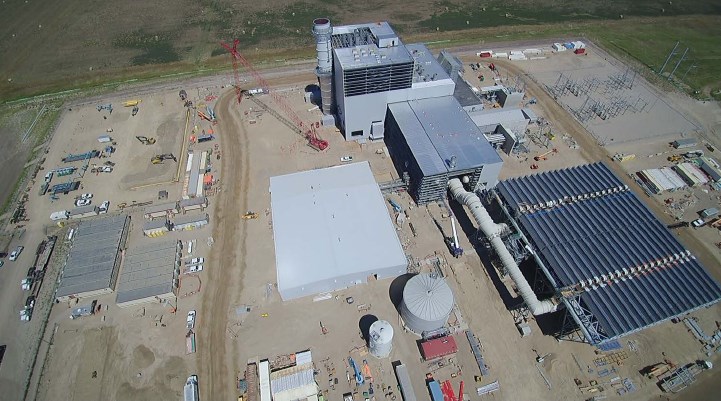The Saskatchewan NDP is concerned about the construction of the Great Plains power plant in Moose Jaw and whether provincial workers will be used to construct the building.
During a recent debate in the legislature, NDP MLA Aleana Young (Regina University) said that the throne speech talked about supporting Saskatchewan businesses and buying locally. However, she noted that the Saskatchewan Party has adopted the viewpoint of “do as I say and not as I do” with big projects.
Young used the example of the Chinook Power Plant construction in Swift Current, where 44 per cent of the workers were from Saskatchewan and the company selected to build the plant was Missouri-based Burns and McDonnell. She pointed out that the province chose this same company to build the power plant in The Friendly City.
“We’ve heard both experts and the government say that interprovincial travel is risky, and yet, the Sask. Party’s ready to endanger public by bringing in businesses and workers from outside Saskatchewan,” she said.
The pandemic has gone poorly here, but not as badly as in Manitoba and Alberta, she continued. She wondered if bringing in workers from those provinces was the best choice.
The provincial government wants to foster situations where Saskatchewan companies and workers can successfully bid and participate in projects here, said MLA Don Morgan, minister for crown investments and SaskPower. However, with this particular project, there were no Saskatchewan or Canadian bidders.
Many Saskatchewan workers would have been thrilled to work on this project, especially when the current economic situation is “dire,” said Young. People are looking for work, but the Sask. Party government is “selling out Saskatchewan” with this project. She wondered why the government didn’t think unemployed workers deserved a job.
Contrary to the NDP’s assertions, Saskatchewan has the lowest unemployment rate in the country, replied MLA Jeremy Harrison, the minister responsible for trade and export development. What would push that rate “catastrophically higher” is if the Sask. Party followed the NDP’s suggestion to shut down the entire small business sector because of the pandemic.
“We are working very closely with that sector. We believe and know they can operate safely … ,” he continued. “We will not put tens, if not a hundred-thousand employees, out of work overnight.”
With a new ministry for SaskBuilds and procurement and the new minister overseeing that portfolio, Young suggested that the provincial government implement a SaskFirst procurement plan, as the NDP had suggested during the election campaign. Harrison replied that the Sask. Party was investing $7.5 billion over two years to address infrastructure projects, while it had created “the most comprehensive support package” in Canada to support small businesses and tourism.
Afterward, Young said during a media scrum that the NDP wants skilled jobs to stay here since that money also stays here, which could help struggling businesses. Moreover, the party wants to ensure unemployed workers have jobs and that workers living outside the province can return to their families.
With construction to start on the power plant in the spring, now is the right time to ask questions about this project, she added.
The province knew that Burns and McDonnell had the expertise to lead this project, which is why it hired the company, said Morgan afterward. After awarding the project to the Kansas City company, SaskPower reached out to 300 provincial contractors and tradesmen to inform them about the Moose Jaw project and how they could become involved.
A Tuxford-based company was the first provincial business to perform work on the project by doing road construction.
“Wherever we can, we want to see that Saskatchewan companies and bidders have full opportunity to participate wherever they can,” Morgan added. “We use a values-based approach that looks at a variety of factors to try and make sure as much money as possible is reinjected back into the Saskatchewan economy.”




